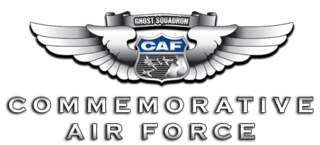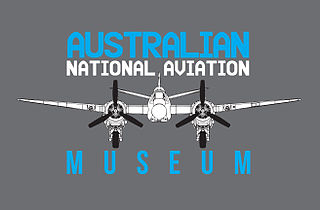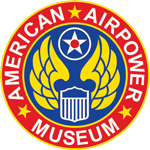
The Consolidated Model 28, more commonly known as the PBY Catalina, is a flying boat and amphibious aircraft that was produced in the 1930s and 1940s. In Canadian service it was known as the Canso. It was one of the most widely used seaplanes of World War II. Catalinas served with every branch of the United States Armed Forces and in the air forces and navies of many other nations. The last military PBYs served until the 1980s. As of 2021, 86 years after its first flight, the aircraft continues to fly as a waterbomber in aerial firefighting operations in some parts of the world.

The North American A-5 Vigilante is an American carrier-based supersonic bomber designed and built by North American Aviation (NAA) for the United States Navy. Before the 1962 unification of Navy and Air Force designations, it was designated A3J.

The Douglas SBD Dauntless is a World War II American naval scout plane and dive bomber that was manufactured by Douglas Aircraft from 1940 through 1944. The SBD was the United States Navy's main carrier-based scout/dive bomber from mid-1940 through mid-1944. The SBD was also flown by the United States Marine Corps, both from land air bases and aircraft carriers. The SBD is best remembered as the bomber that delivered the fatal blows to the Japanese carriers at the Battle of Midway in June 1942. The type earned its nickname "Slow But Deadly" during this period, along with a rarely-used accompanying nickname of "Furious D."

The Commemorative Air Force (CAF), formerly known as the Confederate Air Force, is an American non-profit organization based in Dallas, Texas, that preserves and shows historical aircraft at airshows, primarily in the U.S. and Canada.

The Martin PBM Mariner was a twin-engine American patrol bomber flying boat of World War II and the early Cold War era. It was designed to complement the Consolidated PBY Catalina and PB2Y Coronado in service. A total of 1,366 PBMs were built, with the first example flying on February 18th, 1939 and the type entering service in September 1940, with the last of the type being retired in 1964.

Eastern Provincial Airways (EPA) was an airline that operated in Atlantic and eastern Canada. At its peak, the carrier operated jet service with Boeing 737-200 aircraft connecting many communities that today only have scheduled passenger flights provided by 18-seat commuter turboprop aircraft. The airline traces its history from Maritime Central Airways (MCA) from 1961. It merged with CP Air to form Canadian Pacific Air Lines in 1986.

The Piasecki HUP Retriever/H-25 Army Mule is a compact single radial engine, twin overlapping tandem rotor utility helicopter developed by the Piasecki Helicopter Corporation of Morton, Pennsylvania. Designed to a United States Navy specification, the helicopter was produced from 1949 to 1954, and was also used by the United States Army and foreign navies. The HUP/H-25 was the first helicopter to be produced with an autopilot and also the first to perform a loop.

The Norwegian Aviation Museum was opened by King Harald V on May 15, 1994. It is the Norwegian national museum of aviation and also the largest aviation museum in the Nordic countries, covering around 10,000 square metres (110,000 sq ft). Situated in Bodø, Nordland the building is shaped like a huge propeller and contains both a civil and a military collection of aircraft.

The Yanks Air Museum is a non-profit 501(c)(3) organization organization and museum dedicated to exhibiting, preserving and restoring American aircraft and artifacts in order to show the evolution of American aviation, located at Chino Airport in Chino, California.

The Atlantic Canada Aviation Museum is an aerospace museum located in Halifax, Nova Scotia, Canada near the Halifax Stanfield International Airport.

The Bird Innovator was an American four-engined executive amphibious airplane modified from a Consolidated PBY Catalina by the Bird Corporation.

The Moorabbin Air Museum is an aviation museum at Moorabbin Airport in Melbourne, Victoria, Australia. It was founded in 1962 as the Australian Aircraft Restoration Group, in an attempt to maintain a World War II-era Bristol Beaufighter aircraft. It has since become a museum, with a large aircraft collection. It was known as the Australian National Aviation Museum up until October 2021. As of 2021 it held nearly 60 aircraft and 25 engines.

The Akutan Zero, also known as Koga's Zero (古賀のゼロ) and the Aleutian Zero, was a type 0 model 21 Mitsubishi A6M Zero Japanese fighter aircraft piloted by Petty Officer Tadayoshi Koga, that crash-landed on Akutan Island, Alaska Territory, during World War II. It was found intact by the Americans in July 1942 and became the first Zero acquired by the United States during the war that could be restored to airworthy condition. It was repaired and flown by American test pilots. As a result of information gained from these tests, American tacticians were able to devise ways to defeat the Zero, which was the Imperial Japanese Navy's primary fighter plane throughout the war.

No. 162 Squadron RCAF was a unit of Royal Canadian Air Force Eastern Air Command. Formed as a bomber reconnaissance squadron at RCAF Station Yarmouth, Nova Scotia, Canada on 19 May 1942 with Canso A aircraft, the squadron spent an uneventful eighteen months on east coast anti-submarine duty. In January 1944, it was seconded to RAF Coastal Command and moved to RAF Reykjavik, Iceland to cover the mid-ocean portion of the North Atlantic shipping route. On April 17, Flying Officer T. C. Cooke and his crew attacked and sank U-342 while on a meteorological flight west of Iceland.

The American Airpower Museum is an aviation museum located on the former site of Republic Aviation at Republic Airport in East Farmingdale, New York. It maintains a collection of aviation artifacts and an array of aircraft spanning the many years of the aircraft factory's history.
Macau Air Transport Company (Macao Air Transport Company) was a subsidiary of Cathay Pacific that operated seaplane services between Macau and Hong Kong from 1948 to 1961.

Developed as a naval patrol aircraft, the Consolidated PBY Catalina was a widely exported flying boat during World War II. Over the course of the conflict it served with a number of different nations in a variety of roles. In the Royal Australian Air Force, PBYs and PB2Bs served as multi role bombers and scouts, the type eventually earning great renown among Australian aircrews. The motto of the Catalina squadrons was "The First and Furthest."

















